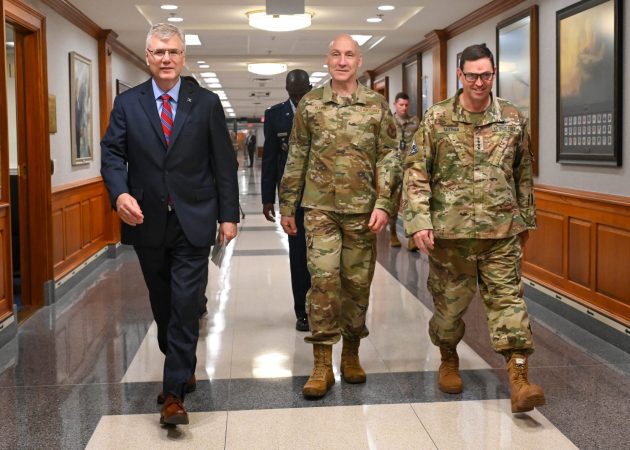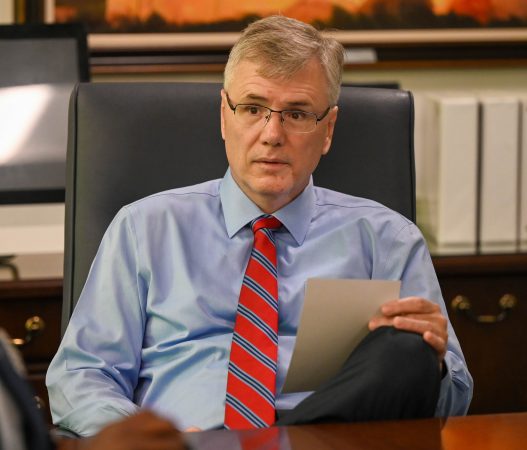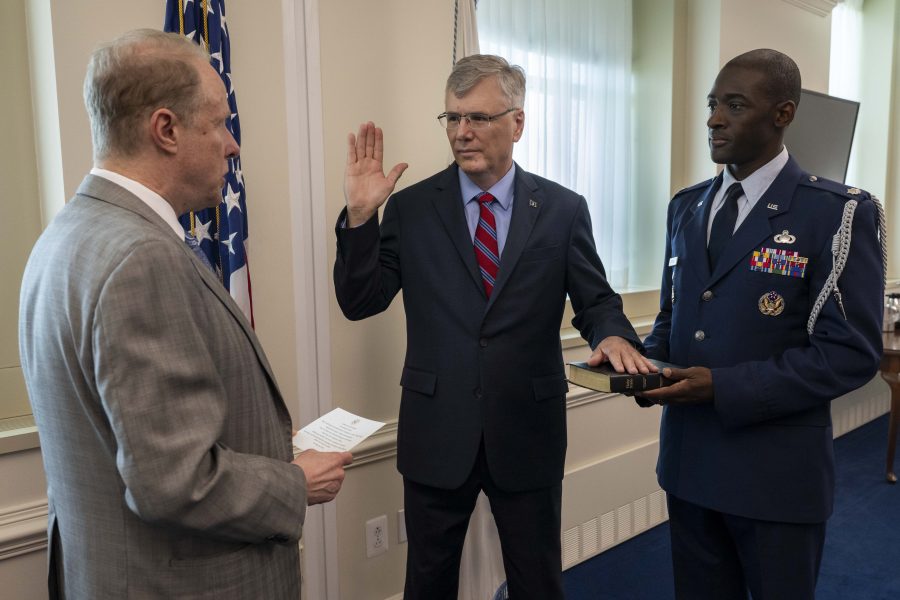Dr. Troy E. Meink was sworn in as the next Secretary of the Air Force on May 16, placing a career civil servant with extensive experience in space intelligence at the helm of the Air Force and Space Force.
Meink was sworn in by Deputy Secretary of Defense Steve Feinberg at the Pentagon.
“I am humbled and excited to be the 27th Secretary of the Air Force,” Meink said in a statement posted on social media. “I’d like to thank President Trump for the chance to work for our Total Force Airmen and Guardians supporting our Nation’s defense.”
A former KC-135 navigator, Meink was the No. 2 civilian at the National Reconnaissance Office during the last administration.
The NRO, a Department of Defense intelligence agency, works closely with the Space Force. Now, three days after he was confirmed by a Senate vote of 74 to 25 in the Senate, Meink will begin to shape America’s airpower and spacepower as head of the Department of the Air Force.
“I am looking forward to leading such an amazing team—the most talented, professional, and capable air and space professionals the world has ever seen,” Meink continued. “We have a lot of work to do, and I can’t wait to move forward with you in the next few months and years.”
Meink will confront a changing Air Force. Its “re-optimization” initiatives, such as planning for the new Integrated Capabilities Command and other reforms, were paused so the Trump administration’s team could review them. How Meink and the administration choose to proceed could affect the service for decades.
Meink was pictured walking in the E-Ring of the Pentagon, which hosts the offices of senior defense and military officials, with Air Force Chief of Staff Gen. David W. Allvin and Chief of Space Operations Gen. B. Chance Saltzman in a photo posted on his X account May 16.

Meink replaced Gary A. Ashworth, a career acquisition professional who had been acting as Air Force Secretary since January while Meink waited for confirmation.
“It has been an honor serving you and your families as the Acting Secretary of the Department of the Air Force these past four months,” Ashworth wrote in a letter to the force released May 13. “Before I move on, I want to thank each and every one of you for the incredible professionalism you have displayed. During this transition, you have stayed calm, executed the mission, and moved the DAF forward.”
Now that Trump has signed off on the next-generation F-47 crewed fighter, Meink will have to figure out how to balance paying for the platform while maintaining the current fighter fleet, already the oldest in 30 years, while meeting other Air Force requirements.
Among them is the Sentinel intercontinental ballistic missile system, which is to replace the Minuteman III missile. The program will likely be restructured as officials wrestle with the cost of nuclear modernization. Meink and Allvin will also have to address delays in delivering the new “Air Force One” aircraft, which is being produced by Boeing, as well as competition for funding that could threaten other programs.
Allvin wrote on X that the Air Force is “ready to move out in support” of Meink’s vision for the service.
The Department of the Air Force is reorienting its budget towards the Trump administration’s Golden Dome missile defense initiative, which calls for more advanced space tracking, interceptors, and lightning-fast data transfer—an initiative where the Space Force will play a leading role.
That will likely draw more resources to the Space Force, and possibly the Air Force. Space Force leaders have said they need more resources and manpower to keep up with their growing mission portfolio and existing commitments. Trump championed the establishment of the Space Force in his first term, and Meink is the most space-experienced senior leader in the Pentagon.
But what exactly the Trump administration’s planned $1 trillion in defense spending will be used for is still pending.



